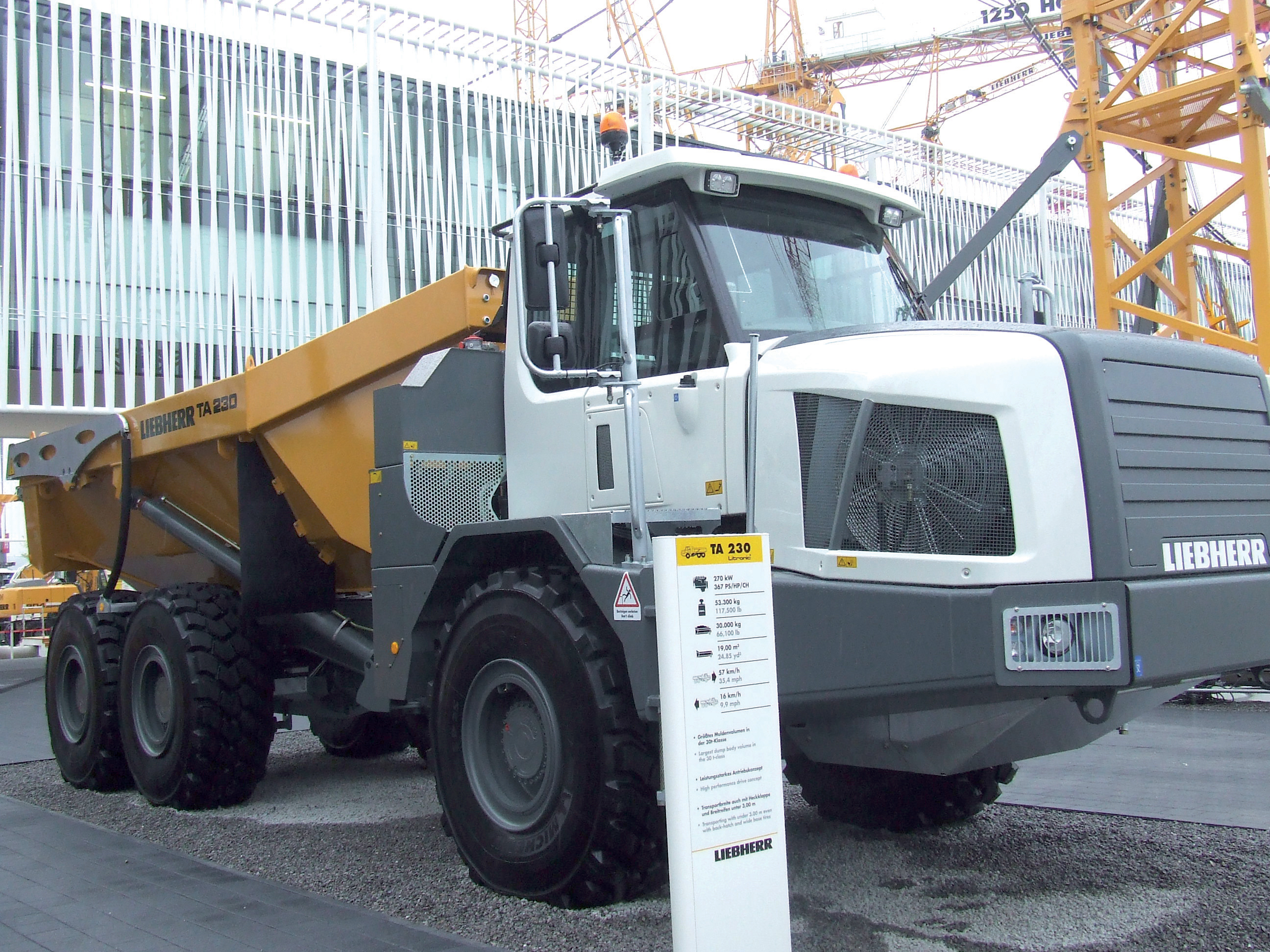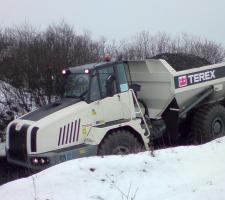
Liebherr's production ADT range features a conventional driveline and high power to weight ratios
Earthmoving machines remain the backbone of construction operations - writes Mike Woof
ADTs, excavators and wheeled loaders play pivotal roles in most construction jobs with the earthmoving stage providing a key component of most projects. This year has seen the introduction of several new and upgraded ADTs, with the promise of more to come in 2011 when the Tier 4 Interim/Stage IIIB exhaust emission regulations come into force for North America and Europe. These will require new low emission engine technology featuring exhaust after-treatment and those manufacturers that have not released new models during 2010 will certainly do so in 2011 as a result.According to Josh Foster, sales & marketing manager at Bell Equipment UK, the firm has opted to add improvements to its ADTs on an incremental basis rather than by introducing a new generation every few years. "We've gone to making small evolutionary changes," he said. "These are small but regular enhancements that over time will complete the range change. When we went from C-D, that was a revolutionary change."
Foster explained that introducing such major product updates at one time can lead to unexpected issues, while the incremental process offers benefits in terms of reliability. He said, "In the long term it does improve our warranty claims as well."
The inclinometer measures the pitch and roll of the truck and this can be set to provide a rapid warning. The system plays an important role and Foster said, "If the rear end goes over it can damage the body heating kit."
Successive upgrades to the electronics are playing an important role in the D series MK VI models, with the systems having been designed to be future-proof. An automotive type, CANbus electrical system allows Bell to run sophisticated electronics and add features while using a comparatively simple wiring harness that is easy to maintain and Foster said, "What we've tried to do is simplify the electrical system."
In previous generation ADTs from Bell the electrics were routed through the roof of the cab but he said that a study showed electrical problems tended to be related to the work environment such as from dirt or moisture ingress - with the actual electrical component design life exceeding that of the truck. As a result the new machines now have most electrical components gel-sealed, "...with only the relay switches and fuses kept behind and access panel," said Foster.
One innovative new electronic control feature is the system that optimises gear changes to minimise cycle times. This system takes note of whether the truck is running laden or unladen as it is linked to the payload indicator and adjusts gearchange times and settings automatically so suit, rather than changing at pre-set engine speeds. The control system offers numerous other features too and Foster gave an example, "If the machine is on a hill, it won't release the handbrake until there is enough engine power, so there's no roll-back. This works automatically and the driver won't even know the machine is doing it."
He added, "This software platform leaves the chance for further intelligence down the line. If you think about it, we could take the retardation out of the cab for example. What we want are clever trucks and the machine that knows what to do can save a lot of time on-site."
Looking ahead he said that the main feature of the MK VII models will be with the fitting of Tier 4 Interim/Stage IIIB compliant engines. Foster added, "We're ahead of the curve in a lot of areas. Our comfort ride feature is a practical solution at a lower cost than some competing systems."
Featuring twin axles, the 922D uses a pivoting bogie system similar to that seen on some graders (as well as the larger
Wadsworth said that the skid unit is similar to that on the previous machine and retains proven features such as the
A centre differential (with a 100% lock capability) is located in the transmission's output shaft and equalises the speed between front and rear axles. With its light weight and efficient driveline, the machine uses 11litres of fuel/hour according to Hydrema's performance tests and Wadsworth commented, "It's very economical on fuel."
The truck also has a hydraulic tailgate and electronically-controlled body opening. Wadsworth said, "It tips in 7.5 seconds and takes 5.5 seconds to lower the body. It is fast because it powers up and down and the ram is inside the chassis rails for protection."
The compact 10tonne capacity 912D weighs in at 17tonnes unladen, is powered by a
Liebherr has been keen to offer a highly productive machine and the TA230 is said to cycle faster than its leading competitors due to a high power to weight ratio. A 270kW, Tier 3 compliant Liebherr diesel developed in partnership with MAN powers the TA230 and this allows a top travel speed of 57km/h, which is notably quicker than much of the competition. Even reversing speeds are high with a maximum 16km/h while the truck has quick tipping times of just 10 seconds. Low emission solutions to meet the coming Tier 4 interim and Tier 4 final regulations will be ready when required in 2011 and 2014 respectively, again developed in partnership with MAN and based on its proven on-road technology. The truck has a comprehensive retardation package and features oil-cooled, wet plate disc brakes fitted to the front and centre axles.
To further boost productivity the high comfort, high visibility cab is said to reduce driver fatigue over a full working shift, further aided by an effective front suspension system. The machine is said to be easy to operate with an automatic transmission while effective retarder controls ensure the TA230 can be driven safely on steep descents. The operator benefits from a diagnostics system that displays machine condition and provides alert warnings when required. Other features include Liebber electronics, rugged shock absorber units and durable, long stroke Liebherr cylinders for the dumpbody.
Liebherr is keen to raise market awareness as to the benefits of its TA230 and is putting some of the first units into its rental fleet. As the Liebherr ADT range is introduced to the rental fleet the existing arrangement with Bell over hire of its machines will however come to an end.
The double wishbone front suspension package is a key performance feature of the TA30 as it provides the driver with a smoother ride on rough ground. This can directly help boost cycle times by allowing higher travel speeds, and indirectly by reducing driver fatigue throughout the working shift. The system also helps reduce shock loads to the machine and cuts wear and tear, while providing a positive steering response for greater precision on undulating terrain.
Power for the TA300 comes from a Cummins diesel delivering 287kW and which meets the Tier 3 emission regulations. A further upgrade of the Terex ADTs will be available with the new Tier 4 interim compliant diesels that Cummins has already unveiled, to meet the new regulations coming in 2011. Braking for the TA300 is by wet plate disc brakes to all six wheels, with a
















